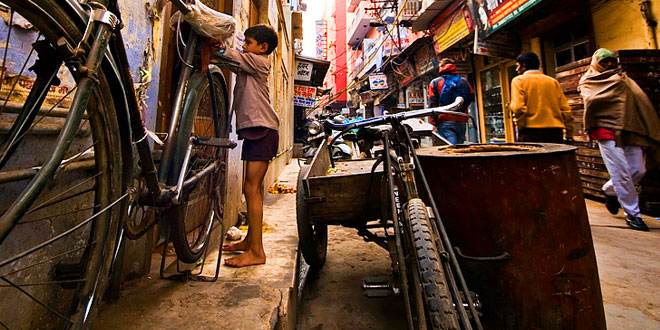Question: “Bombay films, have contributed in a big way to produce an image of the city as a blend of dream and reality, of slums and star bungalows.’ Explain.
Answer:
- Film industry: Bombay (Mumbai has always been associated with the film industry, and is popular as a city of dreams. The film industry provides employment to more than 10 lakh people.
Many Bombay films deal with the arrival in the city of new migrants and their encounters with the real pressures of daily life. - Songs: Some popular songs from the Bombay film industry also speak about city’s life. For example, a song from ‘Guest House (1959) ; ‘Jiska juta usika sar,dil hai chote beda shahor,re vah re vah teri Bombia’ (Bombay, you city what a place ! Here one gets beaten with one’s own shoes! The city is big but peoples hearts are small!)
- Migrants and Film Industry: Most of the people in the film industry were themselves migrants who came from cities like Lahore, Calcutta (Kolkata),Madras Chennai and contributed to the national character of tint industry. Those, who came from Lahore and Punjab, were especially important for the development of the Hindi film industry Many famous writers, like Ismat Chughtai and Saadat Hasan Manto, were associated with the popular Hindi Cinema.
- Big spacious bungalows: Most of me industrialists, film producers, heroes and rich people live in sprawling spacious bungalows which attract large number of people.
Question: Explain the major features of the cities of colonial India.
Answer:
- The pace of urbanisation was slow under the colonial rule Till the early 20th century, approximately only 11 per cent of Indians were living in cities, and most of these were from the three Presidency cities.
- These were multi functional cities because they had major ports, warehouses, homes and offices, army comps, educational institutions, museums and libraries.
- Bombay (Mumbai) was the Premier city of India and it expanded rapidly.
Question: Give three reasons why the population of London expanded from the middle of the eighteenth century.
Answer:
- Industrialisation was the most important factor which attracted people to London.
- The textile industry of London attracted a large number of migrants, fit The city of London attracted people from all walks of life like clerks, shopkeepers, soldiers, servants, labourers, beggars, etc.
Question: What were the changes in the kind of work available to women in London between the nineteenth and the twentieth centuries? Explain the factors which led to this change.
Answer:
- Employment in Factories: In the 18th and the 19th centuries, a large number of women were employed in the factories because during that period, most of the production activities were carried with the help of the family.
- Technological Developments and loss of jobs: But with the technological advancement, women gradually lost their industrial jobs and were forced to do household work. They also tried to increase the family income by activities like tailoring, washing or matchbox making.
- Employment during War: However, in the 20th century, women again started getting employed in wartime industries and offices because most of the male citizens were fighting at the front.
Question: How does the existence of a large urban population affect each of the following? Illustrate with historical examples.
(1) A private landlord.
(2) A Police Superintendent incharge of law and order.
(3) A leader of a political party.
Answer:
- Effects of large urban population over a private landlord: As a result of industrialisation, a large number of people from the rural areas moved to London, thereby increasing the population of London manifold. Such a situation created many problems for most of the residents of London.
However, some sections of the society, such as the private landlords stood to gain. They sold their land to the needy people a: very high rates. They built cheap tenements on their land, rented them to the poor workers, and amassed quite large sums of money as rents, - Effects of large urban population on a police superintendent: A large urban population of London created many problems for the police Superintendent, who was incharge of law and order
(i) The overcrowding of London led to the growth of crime in that city According to one estimate. there were about 20.000 criminals living in London in the 1870s. The presence of such a large number of criminals in London created a serious law and order problem for the Police Superintend.
(ii) When a fire in the slums burnt down many small tenements and killed many people, the police had a hard Time to control the situation.
(iii) Many movements of the workers for better wages, better housing facilities and Just voting rights meant a great headache for the police. - Effects of a Large Urban Population on a Leader of a Political Party: A large City population was a great threat to the law and order of the city. The political parties could easily instigate such crowds to any agitation against the government. Most political movements of the 19th century, like the Chartist Movement for the right to vote for every adult and 10 hours movement, etc., were the direct results of the overcrowding of London.
 Class Notes NCERT Solutions for CBSE Students
Class Notes NCERT Solutions for CBSE Students





